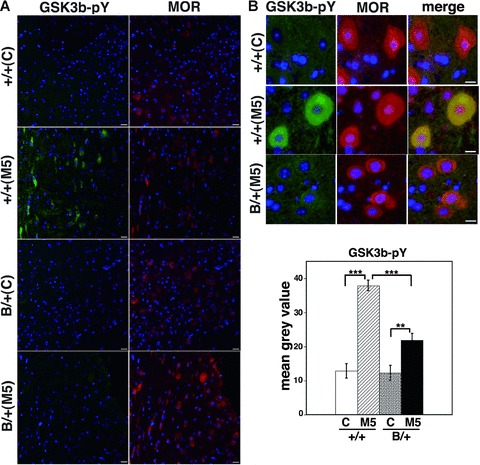Fig 5.

GSK3β is less activated in the mutant BiP mice with morphine treatment. The heterozygous mutant BiP mice (B/+) and wild-type mice (+/+) were injected with 20 mg/kg morphine intraperitoneally twice a day for 5 days (M5) or with saline (C). The brains were sectioned and double immunostained with anti-MOR (right panels) and anti-phospho-GSK3β (Tyr216, left panels). The nuclei were stained with Hoechst 33258. Scale bars represent 10 μm. (A) Low magnification and (B) upper panel; high magnification. MOR-immunopositive neurons in the periaqueductal grey matter of wild-type brains showed more enhanced expression of tyrosine-phosphorylated GSK3β after chronic morphine treatment significantly than those in the mutant BiP brains by densitometry (B, lower panel, arbitrary unit, +/+ C; n= 11, 1/1 M5; n= 11, B/1 C; n= 10, B/+ M5, n= 13). **P < 0.01, ***P < 0.001, one-way ANOVA with the Bonferroni post hoc test.
